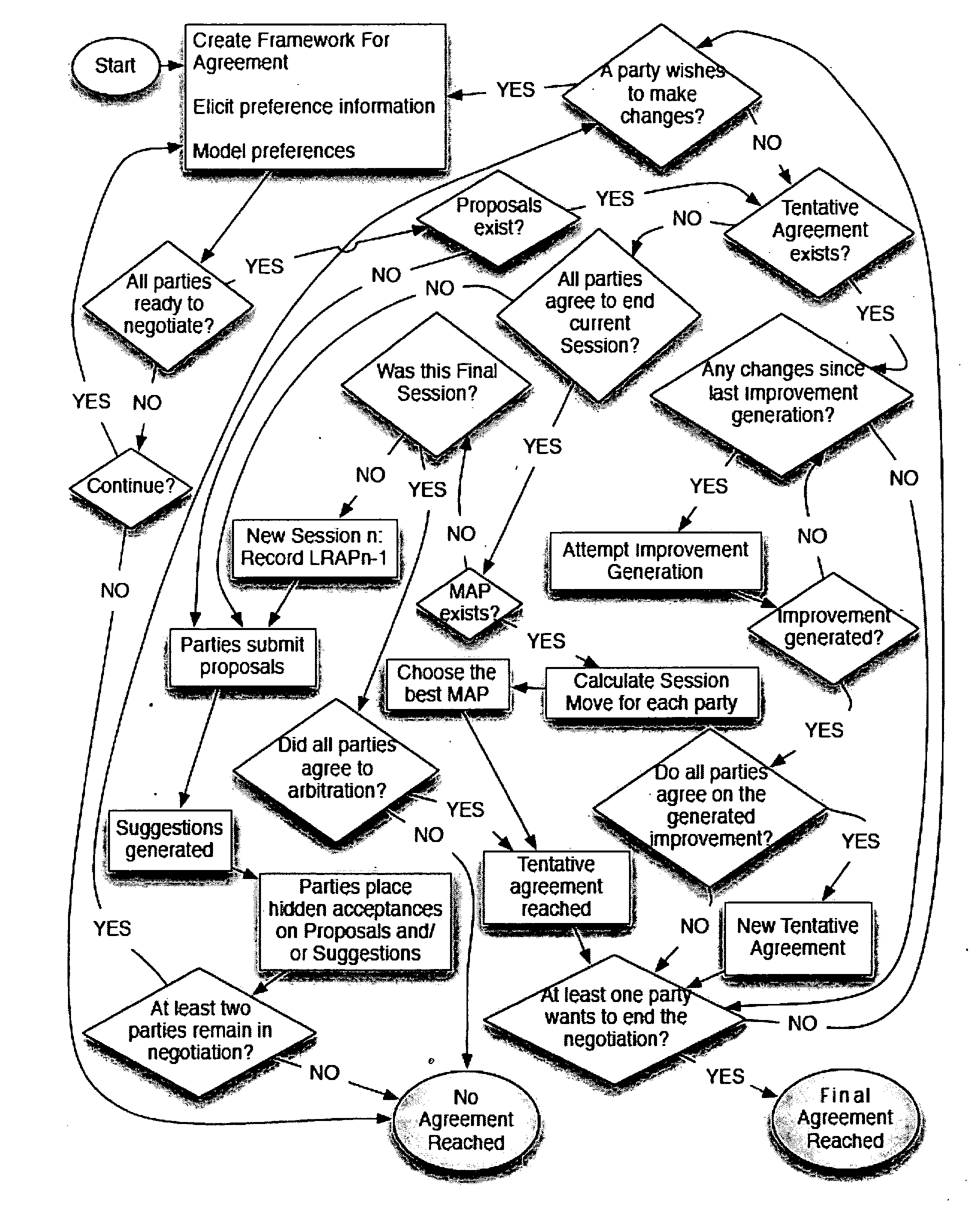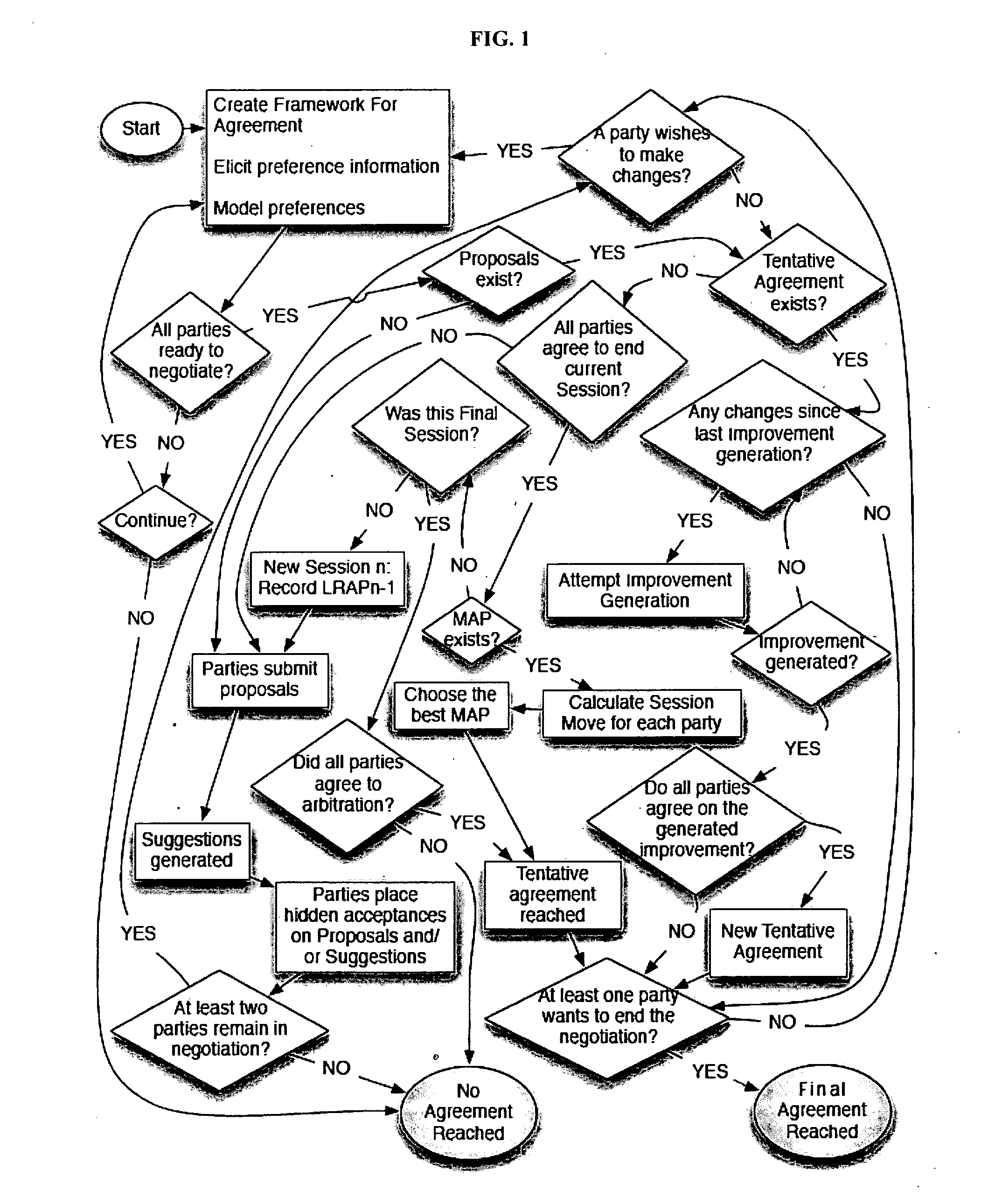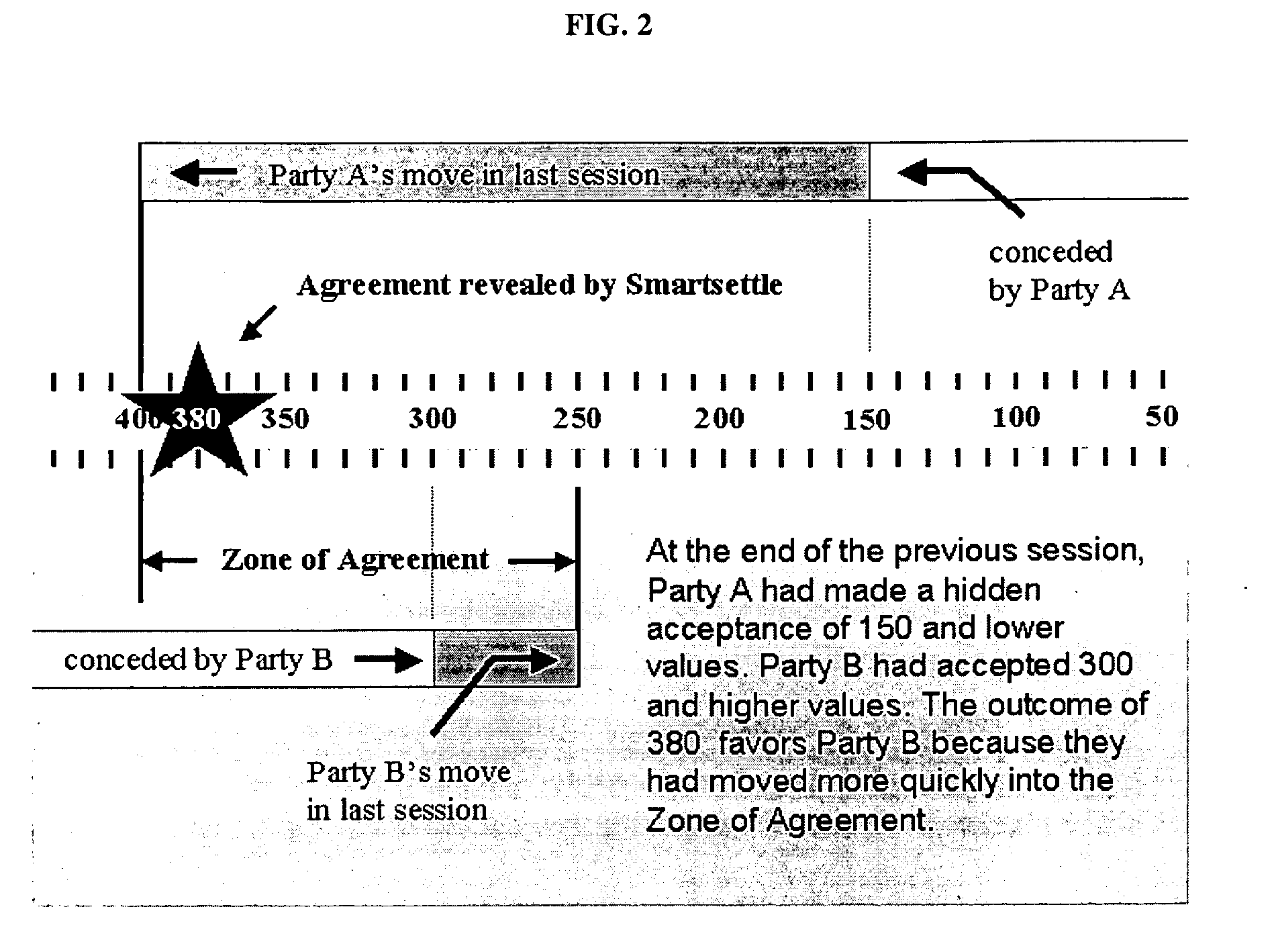Multivariate Blind Bidding Negotiation Support System Rewarding Smallest Last Session Move
- Summary
- Abstract
- Description
- Claims
- Application Information
AI Technical Summary
Benefits of technology
Problems solved by technology
Method used
Image
Examples
example
[0041]As an example of the algorithm employed in the preferred embodiment, consider the general case with multiple decision variables and two or more parties where a number of packages are available as potential agreements, each representing specific values for each variable. At the beginning of a session, parties will each have accepted some packages, but there are no mutually acceptable packages (MAPs). At the end of the session, assume that there are at least two packages acceptable to all parties. The algorithm is designed to select one of these mutually acceptable packages. In the case where there is only one mutually acceptable package at the end of the session, that package becomes the tentative agreement. In the case where there are still no mutually acceptable packages, the negotiations must continue for another session.
[0042]For each party, for the session that results in mutually acceptable packages, there will be a “Session Move” that represents how far that party has “m...
PUM
 Login to View More
Login to View More Abstract
Description
Claims
Application Information
 Login to View More
Login to View More - R&D
- Intellectual Property
- Life Sciences
- Materials
- Tech Scout
- Unparalleled Data Quality
- Higher Quality Content
- 60% Fewer Hallucinations
Browse by: Latest US Patents, China's latest patents, Technical Efficacy Thesaurus, Application Domain, Technology Topic, Popular Technical Reports.
© 2025 PatSnap. All rights reserved.Legal|Privacy policy|Modern Slavery Act Transparency Statement|Sitemap|About US| Contact US: help@patsnap.com



